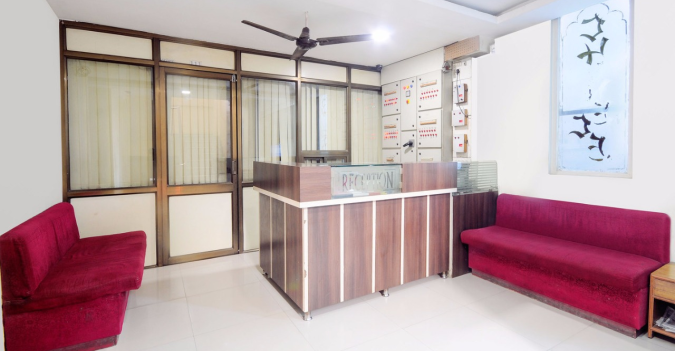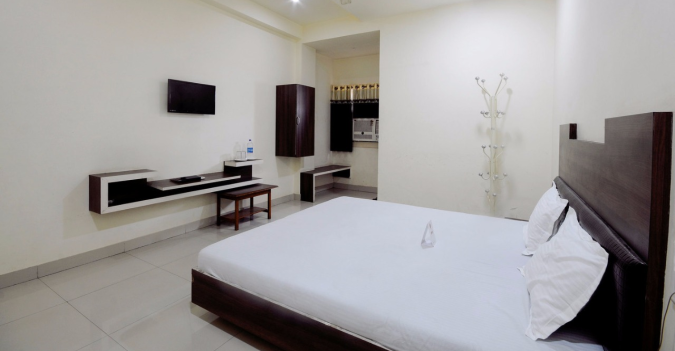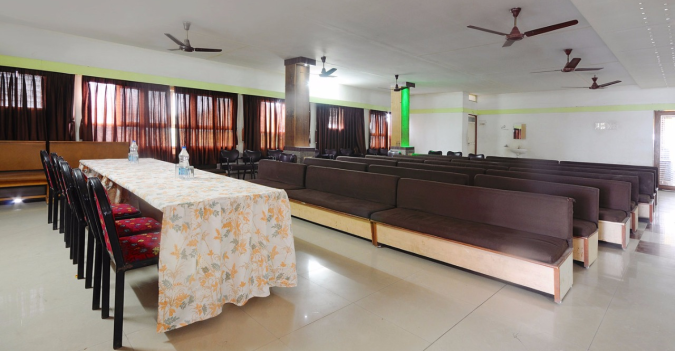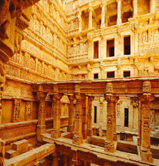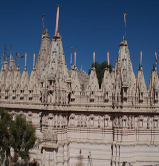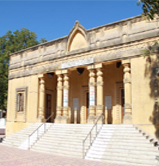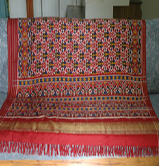We are Hotel Navjivan where we make your stay the warmest, the most joyous with excellent facilities to ensure satisfaction, comfortable and value of money. We provide our guest with a quiet & relaxed ambience in our specious & richly appointed rooms. The best centrally and budgeted hotel in the city.
About City !
-
Rani Ki Vav
Rani (Queen) Udayamati commissioned this vav or stepwell, in 1063 in the memory of her husband King Bhimdev I of the Solanki dynasty. The vav was later flooded by the nearby Saraswati river and silted over until the late 1980s, when it was excavated by the Archeological Survey of India, with the carvings found in pristine condition. Rani Ki Vav is amongst the finest stepwells in India, and one of the most famous legacies of the ancient capital city.
The vavs of Gujarat are not merely sites for collecting water and socialising, but also simultaneously hold great spiritual significance. They were originally constructed quite simply, but became more intricate over the years, perhaps to make explicit this ancient concept of the sanctity of water by carving it out in stone deities. You may thus enter Rani Ki Vav as if it is a subterranean temple.
The steps begin at ground level, leading you down through the cool air through several pillared pavilions to reach the deep well below. There are more than 800 elaborate sculptures among seven galleries. The central theme is the Dasavataras, or ten incarnations of Vishnu, including Buddha. The avatars are accompanied by sadhus, brahmins, and apsaras (celestial dancers), painting their lips and adorning themselves. At water level you come to a carving of Sheshashayi-Vishnu, in which Vishnu reclines on the thousand-hooded serpent Shesha, where it is said he rests in the infinity between ages. -
Sahasralinga Talav
Not to be outdone, Siddhraj Jaysinh built the reservoir Sahasralinga Talav, meaning "lake of a thousand lingas”, just north of Rani Ki Vav in 1084, over a lake originally known as Durlabh Sarovar, built by the King of Durlabhray. During his rule he had many artificial tanks built in different parts of Gujarat, but this one surpasses all the others, technologically, artistically, and spiritually. Like in Rani Ki Vav, the architecture represents the integration of careful water management with the sanctity of water. Of the 7-hectare spread of ruins only 20 percent has been unearthed, excavated in 1942-43, and though it was destroyed three times in attacks, its splendor is still evident. There is a finely carved three-ringed sluice gate that channeled water from the Saraswati river into the reservoir, and it is said that the lake had inbuilt natural filtration. The reservoir contains elaborate sculptures of deities and impressive columns that once supported a ceiling. On the banks were the remains of a Shiva temple with a colonnade of forty-eight pillars, and numerous small temples, each with a small phallus on a vulva, representing the creative spirit and fertility of Shiva and Parvati.
-
Jain temples
Panchasara Parshvanath Jain Derasar is one of the largest of more than 100 Jain temples in Patan, a reminder of Patan’s role as center of Jainism during the Solanki era, with sophisticated stone carvings and white marble floors that are characteristic of Jain architecture. It is also worth visiting Kapur Mahetano Pado, where the stone temple has a wooden interior. Jain temples were once all of fantastically and intricately carved wood until, it is said, the master-builder Uda Mehta saw a mouse carrying a burning candle in its mouth and realized that one mishap would destroy years of work, and from then on insisted that all Jain temples should be created in stone.
-
Hemachandracharya Jain Gnan Mandir
Hemachandracharya, renowned Jain scholar and poet, is credited with formulating Gujarati grammar. His treatise ‘Siddha Hema Shabdanushasana’, written during the rule of Siddharaj Jayasinh, is seen as a counterpart to Panini’s treatise on Sanskrit grammar. The poet built this Gnan Mandir, literally "knowledge temple", an ancient library that includes a number of ancient palm-leaf Jain manuscripts (some written in ink of gold) and literature that he wrote. Open 10am-5pm
-
Muslim architecture
Explore the early Muslim constructions, built even earlier than those in Ahmedabad, such as the Sheikh Farid’s mosque and mausoleum, with its beautifully carved ceiling.
-
Patola weavers
Patola is the name of the silk saris unique to Patan. One version of the Patola legend is that King Kumarpal (12th century) commissioned Patola robes from Jaina (South Maharashtra), a new one for every daily puja. When he learned the King of Jaina was sending him used clothes, he went to the south to attack and defeat the southern ruler. He brought back 700 Patola weaver families to Patan. Of those families, only the Salvis continue the craft today.
Patola is one of the most difficult forms of weaving in the world. It uses a double ikkat style where the warp and weft threads are dyed meticulously before weaving, according to a pre-designed pattern. The weaver then aligns them perfectly on the loom, which naturally creates a unique combination of geometric delineation with soft hazy outlines. Besides in Patan, double ikkat is used only in Bali, Indonesia. It is said that an Indonesian king visited India, was awed by the Patola craft, and took it back to his land saying that only Indonesian royalty would be allowed to wear it
The saris take 4-6 months to make, with more than 70 days for the coloring of the silk threads, and about 25 days for the weaving. They come in four styles: 1) for the Jains and Hindus, with flowers, parrots, elephants, and dancing figures, 2) for the Muslim Bohras, with geometric and floral design, to be used at weddings, 3) for Maharashtrian Brahmins, in solid dark colors bordered with designs of women and birds, called Nari Kunj, and 4) for traditional export markets in the Far East. Immense dexterity is required of the dyer, for visualizing the pattern of dyeing, especially for the weft threads which are woven in zigzag, and also of the weaver, for working at an even pace, so that the warp and weft meet at precisely the right place without breaking the silk threads. These extreme levels of craftsmanship give Patola artists enough reason to put a high price on their work, and to guard closely their patterns as a trade secret.
To watch the masters of the craft at work, or order your own piece, visit Vinayak and Bharat Salvi at Patan Patola Heritage +91 2766 231369, Patolawala Salvivado, Patolawala St. or Ashok Salvi at Patolawala Farm House +91 2766 232172, outside Phatipal Gate. The price of saris start at Rs. 90,000. There are also smaller scarves available, starting at Rs. 5000.


